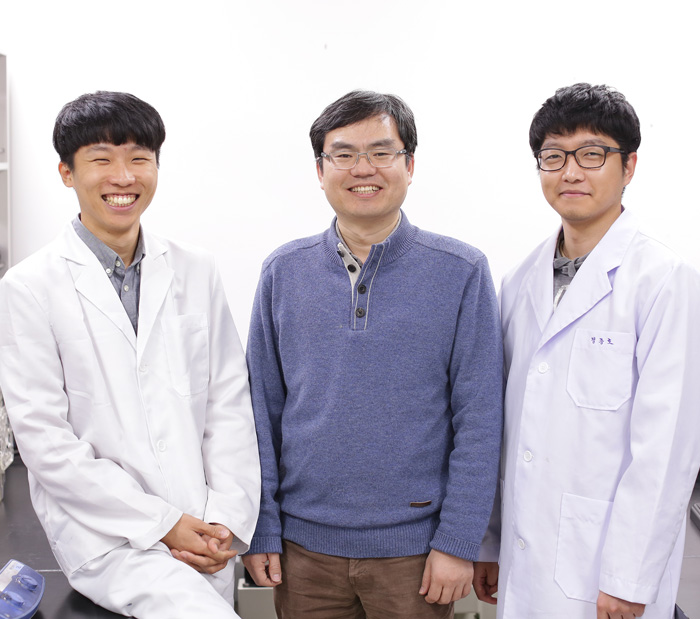Research Stories
Identification of Crystal Lattice Structure of 2-dimensional Magnetic Semiconductor
A team of Prof. Chang Gu LEE’s group (School of Mechanical Engineering, SKKU) and Prof. Sunmin RYU’s group (Department of Chemistry, Postech) identified the crystal lattice structure of a new 2-dimensional (2D) magnetic semiconductor using optical characterization methods.
Mechanical Engineering
Prof.
LEE, CHANG GU
A team of Prof. Chang Gu LEE’s group (School of Mechanical Engineering, SKKU) and Prof. Sunmin RYU’s group (Department of Chemistry, Postech) identified the crystal lattice structure of a new 2-dimensional (2D) magnetic semiconductor using optical characterization methods. 2D materials, such as graphene, have atomic thickness and exhibit excellent electrical, mechanical and chemical properties, thus are expected to find abundant applications in next-generation opto/electronic devices. The recently studied binary metal chalcogenides, such as MoS2, consist of 2 elements and show various electrical characteristics and will be used for flexible electronics and displays. However, These materials lack one important physical property, which is magnetism. Since silicon-based electronic circuits are approaching the physical limit in their performances, scientists are searching for alternative electronic devices and materials. Hence, they are paying attention to spintronic devices, which utilize spin along with charge of electrons for device operation. Now, 2D magnetic semiconductors can be a good candidate material for spintronic devices and circuits due to low-dimensionality.
The team studied a ternary 2D magnetic semiconductor CrPS4, which consist of chromium, phosphorus, and sulfur to investigate its lattice structure using an optical microscope and Raman spectroscopy and confirmed it with a tunneling electron microscope. It is an antiferromagnetic material and has anisotropic in-plane structure. Therefore, its optical and electrical properties can be dependent on its crystalline orientation. When the polarized light was irradiated on the crystal, the light showed different reflection intensity depending on the crystal direction. And the lattice structure could be identified from angle measurement.
This was an important result because the crystal orientation of a material is usually determined by an expensive tool such as tunneling electron microscope. This method can provide a simple but powerful tool for 2D materials researchers to check the crystalline orientation easily and lower the barrier to high-quality experiments. This research will enable many researchers to study these kind materials with ease and can contribute to the studies of spintronics using 2D magnetic semiconductors.
This work was published in ACS nano on Nov. 28, 2017.
본 연구는 ‘ACS nano’ 온라인판 10월 25일자에 게재되었으며 광학기술정보통신부와 정보통신기술진흥센터에서 지원하는 사업이다. ETRI와 공동으로 수행하는 ‘차세대 신기능 스마트디바이스 플랫폼을 위한 대면적 이차원소재 및 소자 원천기술 개발’의 일환으로 개발되었다.

